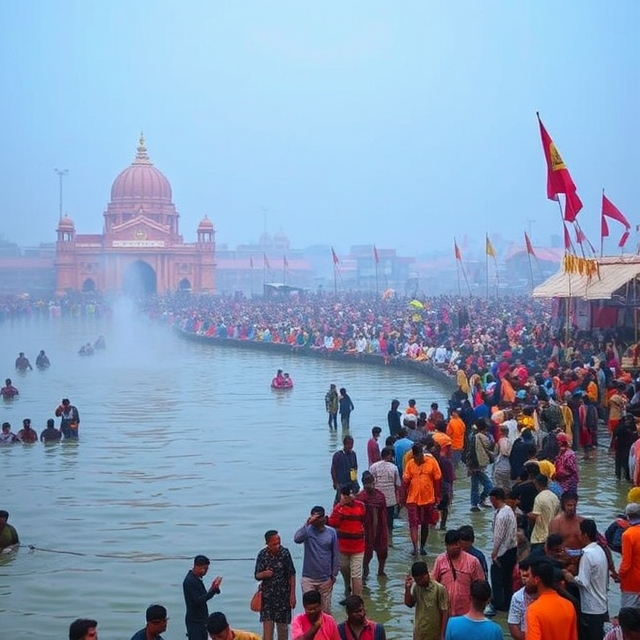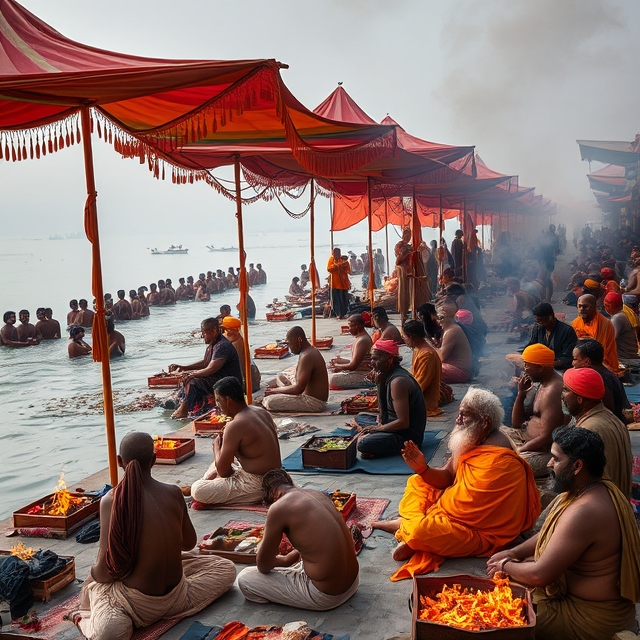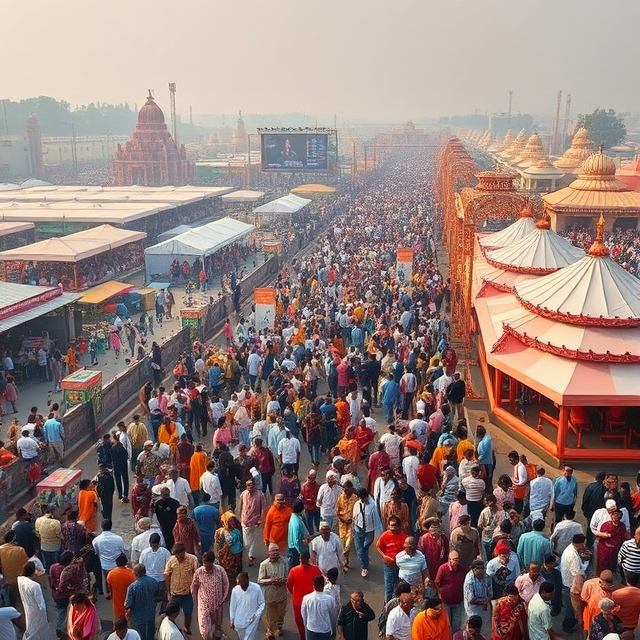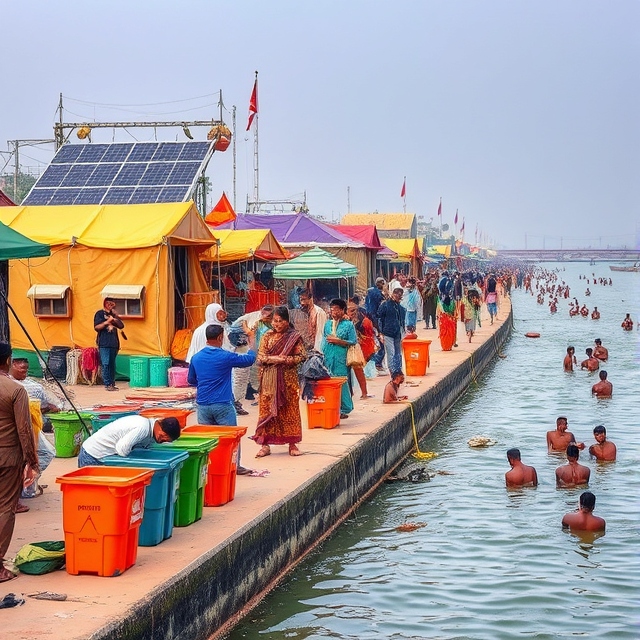Introduction
The Maha Kumbh Mela 2025 is not just an event; it is a spiritual phenomenon that has evolved over centuries. Originating as a small religious gathering, it has grown into one of the world’s largest and most significant festivals. This blog delves into the fascinating evolution of the Kumbh Mela, tracing its journey from ancient rituals to its modern-day grandeur.

The Ancient Origins of Kumbh Mela
The roots of Kumbh Mela trace back to the ancient Vedic period. The earliest references to the Kumbh Mela can be found in the Puranas, where it is mentioned as a gathering to celebrate the victory of the gods over demons. According to Hindu mythology, after the churning of the ocean (Samudra Manthan), a pot containing nectar of immortality, the “Kumbh,” was spilled across four sacred places—Prayagraj, Haridwar, Ujjain, and Nashik—where the Mela is held today.
In these early times, the festival was a small-scale gathering where devotees came together to take part in sacred bathing rituals and seek divine blessings. These gatherings were not as grand as today’s Kumbh Mela, but the spiritual and cultural significance remained as deep as it is now.
The Rise of Kumbh Mela as a Major Religious Event
Over the centuries, the Kumbh Mela expanded both in size and significance. By the 8th century, the Mela began to take shape as an organized event, and it became a key event in the spiritual calendar of India. The festival attracted not only local devotees but also pilgrims from distant parts of India and beyond.
During the reign of the Mughal Empire, Kumbh Mela saw significant transformations in its scale, with increased infrastructure to accommodate the growing number of attendees. Temples, bathing ghats, and roads were built to manage the influx of people, turning the Mela into a more structured and organized event.

The Role of Akharas and Sadhus
The Kumbh Mela has always been a hub for spiritual leaders, including ascetics and sadhus. In the early days, groups of sadhus formed akharas (spiritual organizations) to practice their spiritual discipline and guide the masses. These akharas played a pivotal role in shaping the Mela, as they were central to the ritualistic bathing and other ceremonies.
The akharas’ role has evolved over time, with each of them now having a distinct presence during the Maha Kumbh Mela 2025. Today, these akharas are still central to the event, with their followers participating in the iconic Shahi Snan and other rituals, symbolizing the historical continuity of the Mela’s spiritual importance.
The Evolution of Rituals and Cultural Practices
Over time, the rituals of the Maha Kumbh Mela 2025 have also evolved. The most iconic ritual—bathing in the holy rivers—has remained a constant, but modern practices such as ceremonial processions, the Shahi Snan, and even cultural performances have been integrated into the festival. The evolution of the rituals also reflects the changes in society. Today, Kumbh Mela is not just about religious practices but also showcases Indian culture through dance, music, and theater.

The Modern-Day Kumbh Mela: A Global Spectacle
In the modern era, the Maha Kumbh Mela 2025 has become a global phenomenon. Thanks to modern technology, the event is now broadcast worldwide, allowing people from all corners of the globe to experience it virtually. Additionally, the Mela has attracted tourists, scholars, and cultural enthusiasts who come to witness the unique blend of tradition and modernity.
The infrastructure surrounding the Kumbh Mela has also undergone significant improvements. Roads, transportation systems, and medical facilities have been upgraded to handle millions of visitors. The presence of international organizations and media has transformed the Kumbh into a global event that goes beyond its religious significance.

Environmental and Social Impact
In recent years, there has been a growing awareness about the environmental impact of the Maha Kumbh Mela 2025. Efforts to reduce waste, promote sustainable practices, and ensure that the sacred rivers are protected have become central to the festival’s planning. Eco-friendly initiatives like solar power, waste management systems, and water conservation measures are now part of the event’s infrastructure.
Socially, the Kumbh Mela has become a platform for dialogue on various issues such as social justice, health, and women’s rights. With an increasing number of people participating from different parts of the world, the festival has come to symbolize unity in diversity.
Conclusion
From its humble beginnings as a mythological event to its transformation into a modern-day global spectacle, the Maha Kumbh Mela 2025 represents a unique blend of tradition, spirituality, and cultural evolution. As we move forward, the Mela continues to evolve, keeping its ancient traditions alive while adapting to the needs of the present. The Maha Kumbh Mela 2025 will undoubtedly remain a timeless celebration of faith, unity, and culture for generations to come.

Thanks for sharing. I read many of your blog posts, cool, your blog is very good.
Thank you for your sharing. I am worried that I lack creative ideas. It is your article that makes me full of hope. Thank you. But, I have a question, can you help me?
I don’t think the title of your article matches the content lol. Just kidding, mainly because I had some doubts after reading the article.
Your article helped me a lot, is there any more related content? Thanks!
Thanks for sharing. I read many of your blog posts, cool, your blog is very good.
Your point of view caught my eye and was very interesting. Thanks. I have a question for you. https://www.binance.info/register?ref=P9L9FQKY